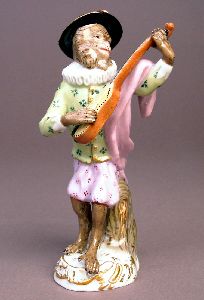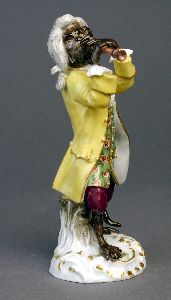 My idea of a newsletter is to bring some of the varied aspects of the Meissen Manufactory to the attention of my existing and potential customers. Wonderful items of hard paste porcelain have been produced at Meissen for nearly three hundred years and if an article can be made in porcelain it has probably been made at Meissen. I have been dealing in Meissen porcelain for thirty years and for me one of the most exciting aspects of my profession is that I am still learning and discovering pieces new to me. My idea of a newsletter is to bring some of the varied aspects of the Meissen Manufactory to the attention of my existing and potential customers. Wonderful items of hard paste porcelain have been produced at Meissen for nearly three hundred years and if an article can be made in porcelain it has probably been made at Meissen. I have been dealing in Meissen porcelain for thirty years and for me one of the most exciting aspects of my profession is that I am still learning and discovering pieces new to me.
For my inaugural newsletter I thought that I might discuss one of the most well known series of Meissen figures ' Der Affenkapelle ' or the monkey orchestra. This series has been a firm favourite with collectors from the time that it was created in 1753, by the modeller J.J.Kaendler, right up to the present day. It is also one of the most copied of any of the Meissen productions. Kaendler probably drew inspiration from the sketches of monkeys dressed in ceremonial court dress playing musical instruments by Christophe Huet (1700-1759). Huet was in demand by the French nobility to decorate their homes with murals and  one commission by the Prince de Conde resulted in the Chateau de Chantilly being decorated with murals of monkeys in human dress. The Marquise de Pompadour who was a great patron of the arts, amongst other things, bought nineteen monkey musicians in 1753 and due to their popularity the moulds had to be re-worked in 1765/66 with the help of Peter Reinicke. It is was at this time that the number in the orchestra was fixed at twenty one musician with a music stand for the conductor. The model numbers for the musicians are from one for the conductor to twenty for the harpist. There are two very similar models bearing the number twelve which explains the discrepancy in the numbering and the confusion amongst collectors as to the full compliment of the orchestra. One monkey is holding a triangle the other drum sticks to play the kettle drums on the back of number three. one commission by the Prince de Conde resulted in the Chateau de Chantilly being decorated with murals of monkeys in human dress. The Marquise de Pompadour who was a great patron of the arts, amongst other things, bought nineteen monkey musicians in 1753 and due to their popularity the moulds had to be re-worked in 1765/66 with the help of Peter Reinicke. It is was at this time that the number in the orchestra was fixed at twenty one musician with a music stand for the conductor. The model numbers for the musicians are from one for the conductor to twenty for the harpist. There are two very similar models bearing the number twelve which explains the discrepancy in the numbering and the confusion amongst collectors as to the full compliment of the orchestra. One monkey is holding a triangle the other drum sticks to play the kettle drums on the back of number three.
The monkey musicians from the eighteenth century are hard to find and can be expensive despite the fact that most need restoring. A price of £2,000 to £3,500 can be expected. The monkeys from the nineteenth century are naturally more common but there can be quite a difference in quality. My preference is for the pieces produced around 1870/80 which I think are very finely decorated. These tend to be in the price range of £1,000 to £1,650 with the conductor and the piano player being the most expensive.
List of musicians with their model number:
1. Conductor. 2. Cellist. 3. Kettle drummer. 4. Clarinettist. 5. Trumpeter. 6. Violinist. 7. Female singer. 8. Bagpiper. 9. French horn player. 10. Female singer. 11. Flautist. 12. Triangle player. 12. Drummer for the kettle drums. 13. Female singer. 14. Drummer with pipe. 15. Lyre player. 16. Guitarist. 17. Female singer. 18. Bassoonist. 19. Pianist. 20. Harpist.
All the figures illustrated were recently sold via my web site. |